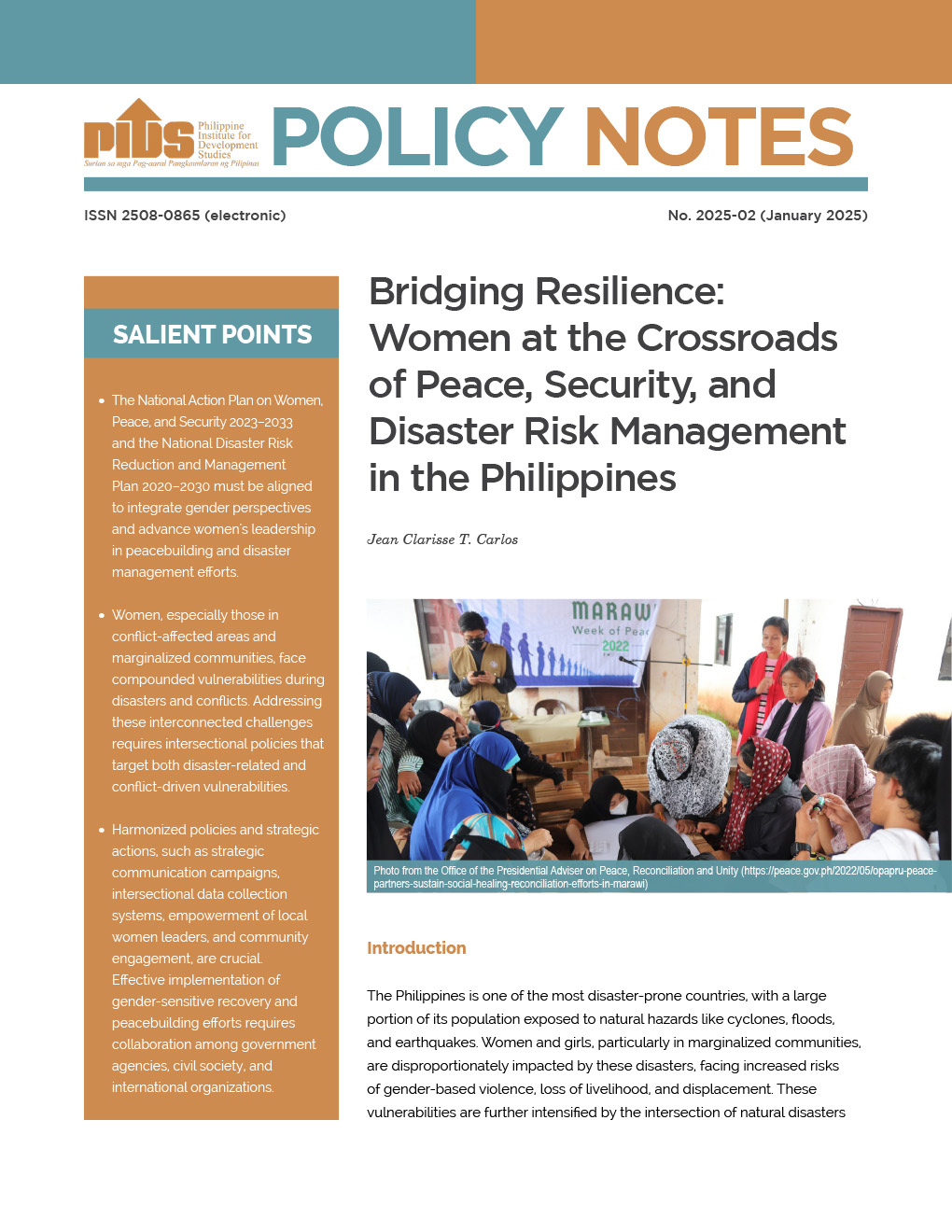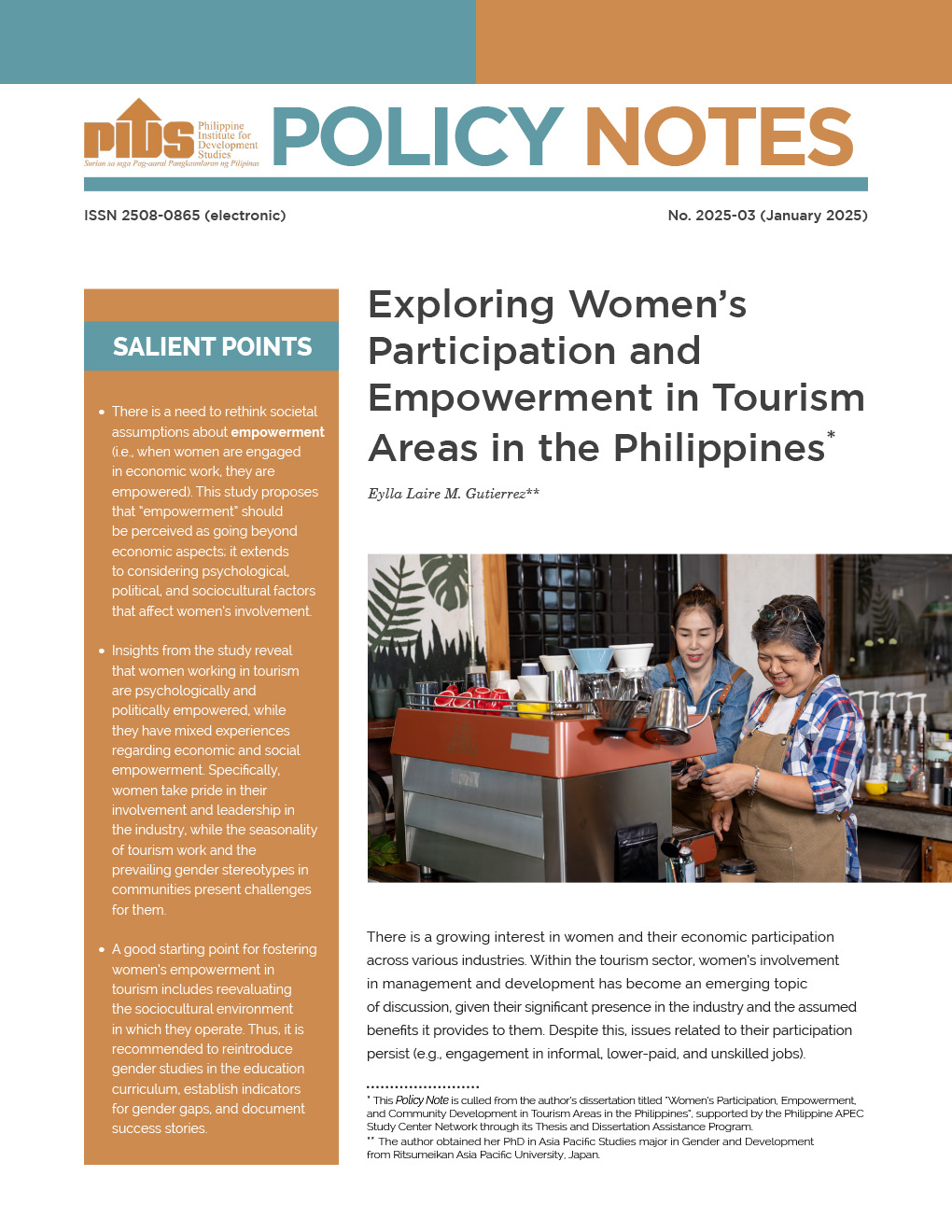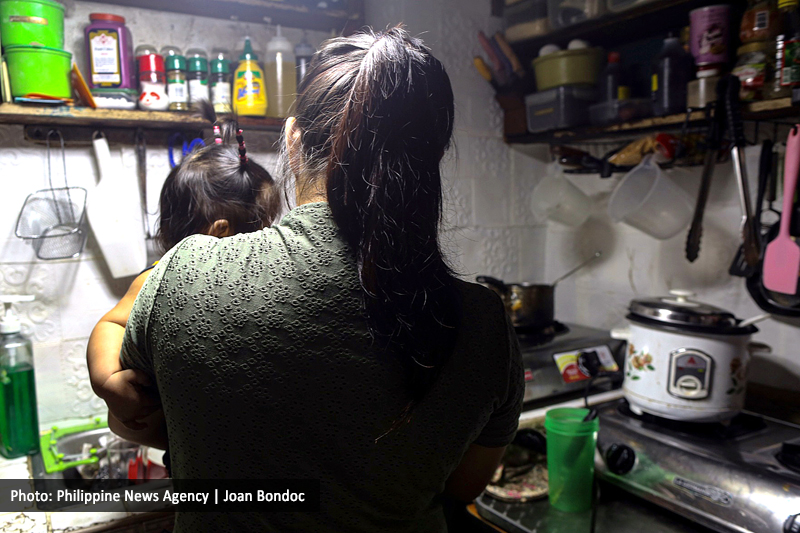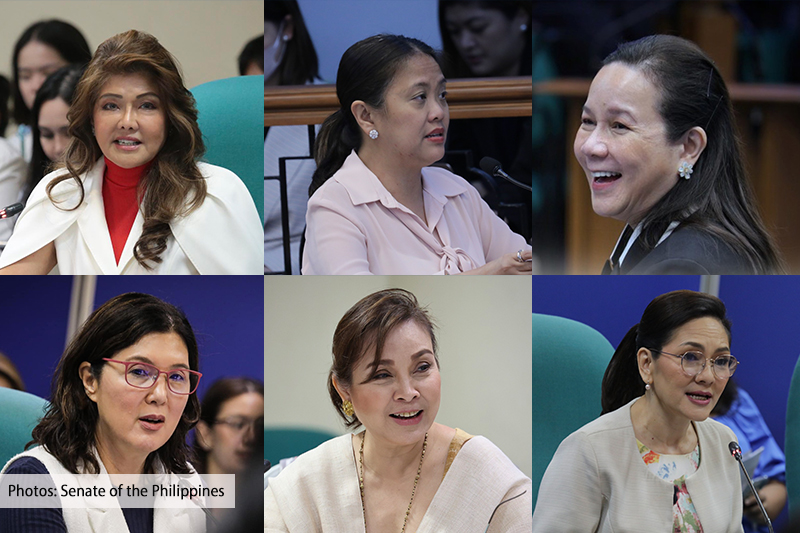The government should adopt measures that will ensure higher level of women participation in governance and in the workplace, the state think tank Philippine Institute of Development Studies (PIDS) said.
A PIDS policy note authored by Clarissa G. David, Jose Ramon G. Albert and Jana Flor V. Vizmanos, said the share of positions held by women in Congress has increased. In the Senate, the number of female lawmakers rose from three in 2001 to six in 2016, but none has ever assumed the position of Senate President.
However, the case for elected local officials is different and “is particularly alarming,” the study said. Only 11 percent of elected local officials were female in 2013, a “sharp decline” from 20 percent in 2010, 18 percent in 2007 and 17 percent in 2004.
The policy note added that only 19 percent of barangay captains and 27 percent of councilors were female.
The study argued the gender gap in governance is not due to the voting public’s bias against women, but because “few women are entering politics.
Citing data from the Commission on Elections, the policy note said women comprised only 17 percent of the national and local candidates from 2004 to 2016. The same proportion assumed office, resulting to at least 1 woman in every 5 national and local elective positions.
Aside from this, the study said Cabinet positions have remained largely dominated by men. Women were more represented in the areas of social welfare (100 percent), tourism (33.3 percent) and health (28.6 percent) than in foreign affairs (6.2 percent), finance (6.7 percent), economics (8.3 percent) and budget and management (15.4 percent).
While female secretaries headed the Department of Social Welfare and Development since 1986, no woman has ever taken charge of the departments of Agriculture, Defense, Interior and Local Government and Public Works.
On the other hand, women have recorded average share of positions in the workplace, primarily due to few initiatives crafting “specific interventions to eliminate gender discrimination” in industries and changing “hostile work environments for women,” the policy note reported.
The study said the past 15 years have seen women’s share in senior and middle management rising to as much as 43 percent. However, female participation in ownership remained “stagnant” at 69 percent, a number almost on a par with Southeast Asian neighbors Indonesia, Lao PDR, Malaysia and Vietnam.
Aside from this, the proportion of firms with female top managers dropped to 29.9 in 2015, from 32.7 percent in 2009, the policy note said. The case was same for other Southeast Asian countries, with the exception of Lao PDR and Malaysia.
Citing data from the Philippine Stock Exchange, the study said women occupy 30 percent of the top executive positions, usually as treasurers, corporate secretaries and finance managers, in the country’s 200 highest market-capitalized companies.
The policy note recommended the government to intervene in both the public and private sectors to improve women representation, to implement measures that would encourage and allow female professionals to hold positions in the government and in the workplace, one of which is to shatter political dynasties, the study said.
Dynasties make it difficult for women to enter politics without dynastic connections, the study added. “If federalism were to push through, it is likely that current power dynamics will continue, if not become less inclusive, unless political reforms are initiated before federalism takes root,” the policy note said.
The study also said the government should review its current regulations on industries to ensure a more inclusive and gender-balanced participation and leadership. This includes demanding private companies to “examine their own existing policies to ensure equity in hiring, retention and promotion that will clear the path for women, especially working mothers.”
“These conversations can be strongly promoted by national government agencies…especially those that have mandates over ensuring inclusivity and gender equality in labor and employment,” the policy note concluded.
A PIDS policy note authored by Clarissa G. David, Jose Ramon G. Albert and Jana Flor V. Vizmanos, said the share of positions held by women in Congress has increased. In the Senate, the number of female lawmakers rose from three in 2001 to six in 2016, but none has ever assumed the position of Senate President.
However, the case for elected local officials is different and “is particularly alarming,” the study said. Only 11 percent of elected local officials were female in 2013, a “sharp decline” from 20 percent in 2010, 18 percent in 2007 and 17 percent in 2004.
The policy note added that only 19 percent of barangay captains and 27 percent of councilors were female.
The study argued the gender gap in governance is not due to the voting public’s bias against women, but because “few women are entering politics.
Citing data from the Commission on Elections, the policy note said women comprised only 17 percent of the national and local candidates from 2004 to 2016. The same proportion assumed office, resulting to at least 1 woman in every 5 national and local elective positions.
Aside from this, the study said Cabinet positions have remained largely dominated by men. Women were more represented in the areas of social welfare (100 percent), tourism (33.3 percent) and health (28.6 percent) than in foreign affairs (6.2 percent), finance (6.7 percent), economics (8.3 percent) and budget and management (15.4 percent).
While female secretaries headed the Department of Social Welfare and Development since 1986, no woman has ever taken charge of the departments of Agriculture, Defense, Interior and Local Government and Public Works.
On the other hand, women have recorded average share of positions in the workplace, primarily due to few initiatives crafting “specific interventions to eliminate gender discrimination” in industries and changing “hostile work environments for women,” the policy note reported.
The study said the past 15 years have seen women’s share in senior and middle management rising to as much as 43 percent. However, female participation in ownership remained “stagnant” at 69 percent, a number almost on a par with Southeast Asian neighbors Indonesia, Lao PDR, Malaysia and Vietnam.
Aside from this, the proportion of firms with female top managers dropped to 29.9 in 2015, from 32.7 percent in 2009, the policy note said. The case was same for other Southeast Asian countries, with the exception of Lao PDR and Malaysia.
Citing data from the Philippine Stock Exchange, the study said women occupy 30 percent of the top executive positions, usually as treasurers, corporate secretaries and finance managers, in the country’s 200 highest market-capitalized companies.
The policy note recommended the government to intervene in both the public and private sectors to improve women representation, to implement measures that would encourage and allow female professionals to hold positions in the government and in the workplace, one of which is to shatter political dynasties, the study said.
Dynasties make it difficult for women to enter politics without dynastic connections, the study added. “If federalism were to push through, it is likely that current power dynamics will continue, if not become less inclusive, unless political reforms are initiated before federalism takes root,” the policy note said.
The study also said the government should review its current regulations on industries to ensure a more inclusive and gender-balanced participation and leadership. This includes demanding private companies to “examine their own existing policies to ensure equity in hiring, retention and promotion that will clear the path for women, especially working mothers.”
“These conversations can be strongly promoted by national government agencies…especially those that have mandates over ensuring inclusivity and gender equality in labor and employment,” the policy note concluded.












